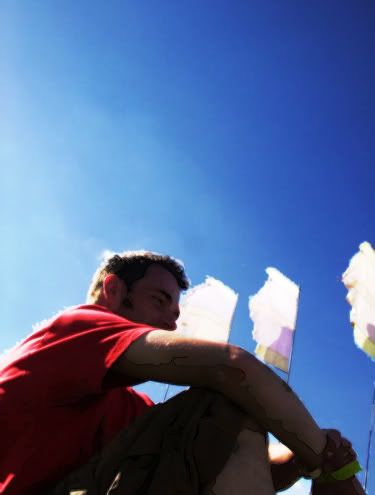Well, the fourth Indiana Jones movie is out next month (Indiana Jones and the Kingdom of the Crystal Skull) so I thought I'd get into Indy fever with another classic opening scene. Now the obvious one to do would be the Raiders of the Lost Ark opening but I decided on the second film because I think it is pure, brilliant film making. Spielberg at his best.
Indiana Jones and the Temple of Doom (1984) starts, like Raiders, with a visual pun on the Paramount logo, the first part of the opening scene is a big song and dance routine to the classic Cole Porter "Anything Goes" in Chinese! Set in 1930's Shanghai it introduces nightclub singer Wilhelmina "Willie" Scott. Spielberg had always wanted to do a 30's style musical number and the perfect excuse is placing Indy in the Club Obi-Wan doing a dodgy deal with gangster, Lao Che, over an ancient artifact and a diamond. Indy is double crossed and a poison is slipped into his drink, Lao Che has the antidote but a deal needs to be done before he will give it to Indy. Indy's friend is killed and a violence ensues and eventually Indy escapes, with Willie (who has snatched the antidote whilst after the diamond, after it is kicked around the room and nearly lost amoungst a split bucket of ice) through a window, using a giant gong to avoid machine gun fire (a scene dropped from Raiders). After a fall through some canapes they land in Indy's sidekicks, Short Round's car, introducing another of the new characters. Phew! It doesn't stop there.
Now, I might seemed to have rushed through that but I don't consider that to be the end of the opening scene". Unfortunately I can only find that part for the attached YouTube clip but the breakneck action continues...
Indy, Willie and Short Round (characters all named after dogs, George Lucas', Spielberg's and screenwriter Willard Huyck's respectively) escape Lao Che's men and to get on a private jet, not realising it belongs to the Shanghai gangster. After a pause for breath our heroes relax in the back of the plane. Meanwhile Lao Che's henchman pilot dumps the fuel and jumps from the plane with the only parachute. Indy struggles with the controls but soon realises they'll have to abandon the plane themselves. All three jump for the stricken plane using an inflatable life raft as a parachute. They land safely before the plane crashes into the side of the snow covered mountain.
But that's not it! They're now careering down the mountain on the life raft, getting faster with every second. Then it's off a cliff and now they're contending with rapids. THIS is why I think this is a classic opening scene. It's a case of out of the fire, into the frying pan, time after time. A real roller coaster. Just when you think they've escaped peril, another situation arises and it's edge of your seat stuff again, with barely time to catch your breath.
Once the rapids slow to a calm and the three are exhausted (along with the audience) into the calmer waters of the river, the two legs of the village elder standing on the bank are spotted as the raft floats past, the real story can start. The opening sequences serve two purposes: getting our characters together, establishing their relationship along the way, and getting Indy and co. to location of the main story. Clever, and exhilarating stuff, brilliant film making and setting the mood for what happens next.
I once used this opening as an example in a lecture I had to give a University. The theme was "the value of popular film". Whilst the other film students gave lectures on the importance of Truffaut and Tarkovskiy I argued that film makers need look no further than the better made blockbuster to see how film works.

1 comment:
The makers of James Bond could, perhaps, learn a thing or two from Spielberg.
I think it is, also, important, though, to mix action, with slow drama. There is too much action, for example, in the new James Bond movies and not enough slow drama to build up the characters / tension etc .. (the last James Bond movie was much better than previous recent ones I think).
Sergio Leone is a director who I think was brilliant at slow drama in action movies (in particular, The Good, the Bad and the Ugly).
But, yes, I would certainly agree with you over Spielberg and Indian Jones.
Post a Comment